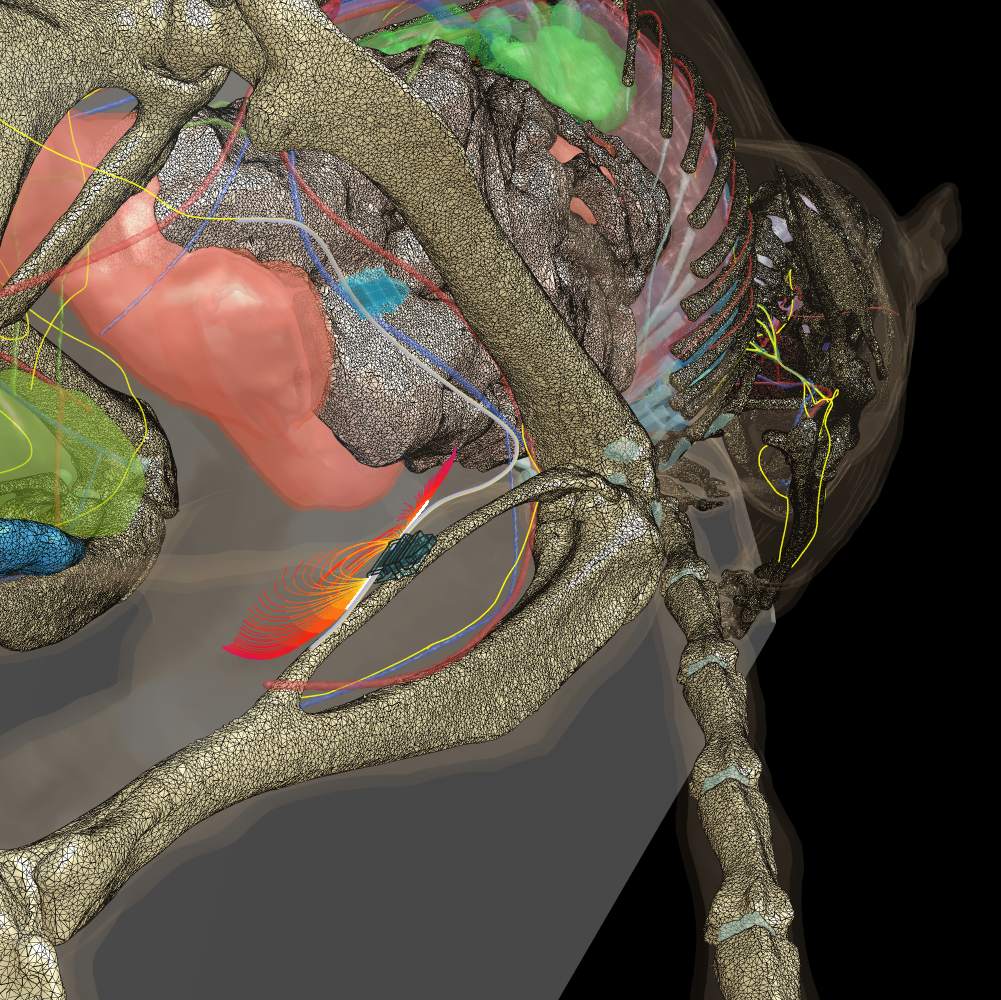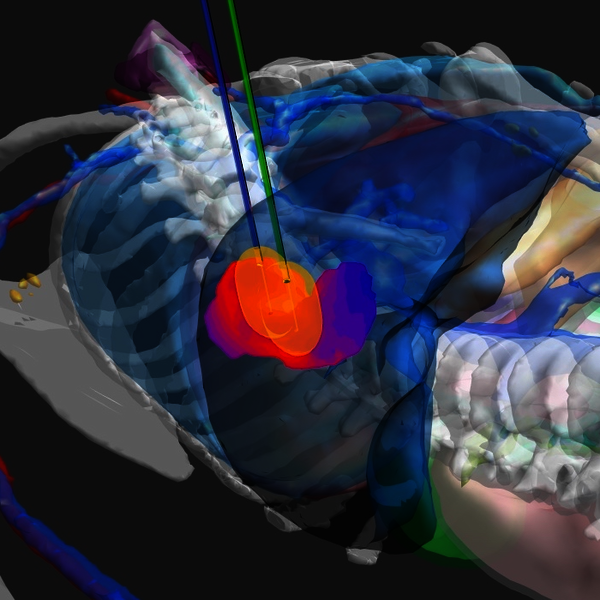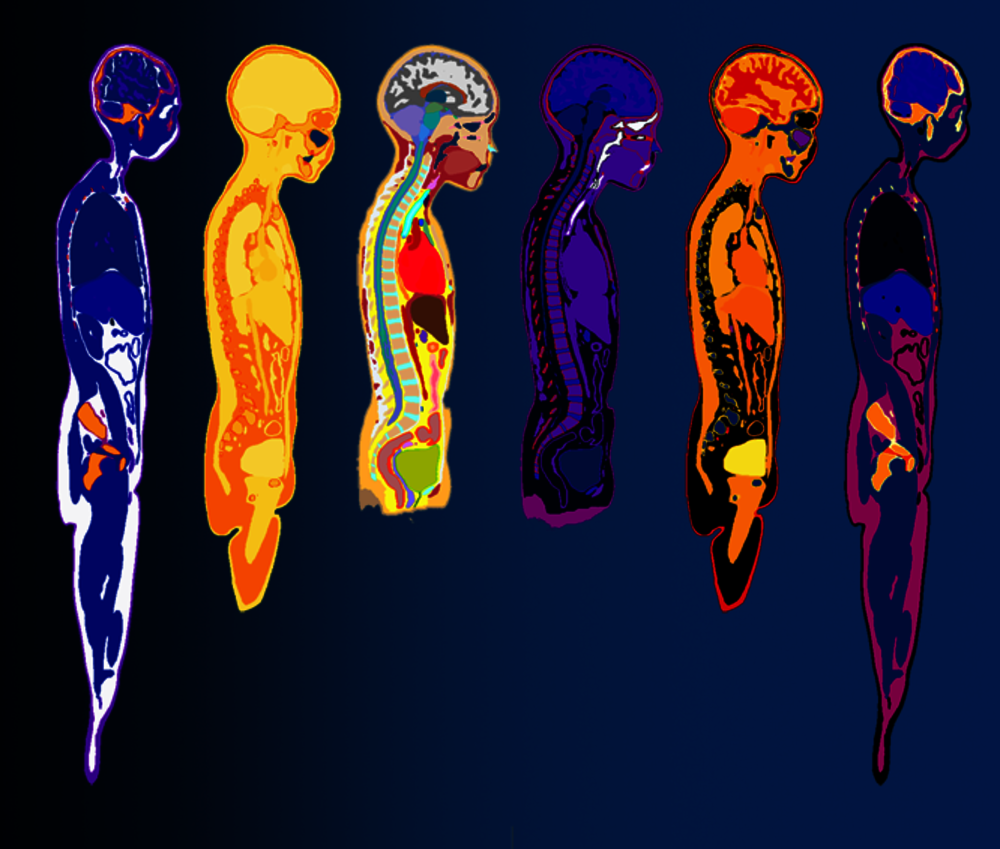- Dynamic modeling of EM-induced neuronal activation, inhibition, and synchronization
- Simulation of axons, complex neuron morphologies, and neural networks
- Coupling with EM-QS solver family
- Accurate and efficient modeling of neural sensing
- Hessian calculator for volume of tissue activated (VTA) estimation
- Predefined models of myelinated and unmyelinated nerve fibers (incl. A-delta spinal afferents, SENN model for LF-exposure safety, etc.)
- Simple import tools for complex, user-defined (Python and hoc-based) neuron models
- .hoc file importer, enabling the integration of morphology- and electrophysiology-realistic neuron models from third-party sources
- Threshold and recruitment curve calculation via automated titration routines
- Rapid, activating function-based estimation of neural recruitment (offers >100-fold acceleration)
- Stimulation selectivity indices for multi-fascicular nerves or spinal-roots
- Detection of neuronal spikes (times and locations)
- Predefined nerve trajectories and axon properties in NEUROCOUPLE ViP models
- Capture and plotting of time-dependent membrane dynamics
- User-defined excitation pulse profiles (e.g., theta-bursts, MRI gradient-switching)
- Automated 10-10 EEG electrode placement
- LF multi-port sources for assessment of stimulation by multi-contact electrodes
- Synapse models
- Diffusion tensor imaging (DTI)-based assignment of heterogeneous and anisotropic brain conductivites (reflecting fiber orientations)
Tissue Models
Neuronal Tissue Models
The Neuronal Tissue Models (T-NEURO) enable dynamic modeling of EM-induced neuronal physiology, from activation to inhibition, using multi-compartmental representations or generic models. Sim4Life integrates Yale University’s NEURON simulation environment, which is ideal for studying field-neuron interactions, optimizing neurostimulation devices, and assessing exposure safety. T-NEURO goes beyond the prediction of individual axonal responses – its unique implementation of the extended reciprocity theorem permits the simulation and analysis of whole-brain biosignals such as magneto-/electroencephalography (MEG/EEG), accommodating realistic neuronal sources, inhomogeneous dielectric environments, and various recording device geometries.
Application Areas
- EM neurostimulation (spinal cord stimulation (SCS), deep brain stimulation (DBS), etc.)
- Transcranial brain stimulation (electrical: transcranial alternating/direct current stimulation (TACS/TDCS), temporal interference stimulation (TIS); magnetic: transcranial magnetic stimulation (TMS))
- Neural sensing (compound action potentials (CAP), electroencephalogram (EEG) and electrocorticogram (ECoG) recordings, local field potentials (LFP), etc.)
- Catheter-based stimulation and sensing
- Neuroprosthetics (retinal, cochlear, vestibular, motor prosthetics)
- Bioelectronic medicine (‘electroceuticals’)
- Magnetic resonance-guided focused ultrasound (MRgFUS) neurosurgery (tumor ablation, neuropathic pain treatment, movement disorders, etc.)
- Low frequency EM exposure safety assessment (wireless power transfer, MR gradient coils, etc.)
- Temperature-dependent neuronal dynamics
- Neuro-motoric incapacitation
- Neural interface design and optimization
- Brain-machine interfaces (BMI)

Thermal Tissue Damage Model

Sim4Life’s thermal dose and tissue damage models permit assessment of the impacts of heating on the physiology of living tissues. The CEM43 tissue heating model is a widely applied technique for quantifying the effects of transient heating based on direct, cytotoxic effects. CEM43 converts time-varying thermal exposures into an equivalent exposure time (in minutes) at 43°C. The approach permits quantitative comparisons of different transient heat exposure scenarios (e.g., short heating at high temperature vs. prolonged, moderate heating) by relating them to an established damage threshold. Sim4Life also provides direct assessments of tissue damage through the Arrhenius tissue damage model.
Application Areas
- Hyperthermic oncology (efficacy evaluation and optimization)
- Radiofrequency, microwave, and focused ultrasound ablation
- MR safety with and without implanted devices
- Electromagnetic and thermal exposure safety
- Skin burn quantification
- CEM43 and Arrhenius tissue damage models
- Accurate (slow) or approximate (fast) model evaluation
- Determination of effective iso-surfaces
- Calculation of cumulative histograms (commonly used for treatment planning)
Database of Tissue Properties
The material parameter database, originated and maintained by the IT’IS Foundation, provides the computational life sciences community with recommended values for, and associated variances of, a growing list of biological tissue properties. The database is free, online accessible, and continually updated to reflect the highest quality measurements available. Sim4Life makes it easy for users to automatically assign tissue parameter values to the Virtual Population (ViP) models from the material properties database. In addition, Sim4Life supports image-based assignment of heterogeneous tissue property maps (anisotropic brain tissue conductivities, perfusion, acoustic propagation in bones) for enhanced realism and accuracy.
List of properties:
- Frequency-dependent dielectric properties
- Densities
- Heat capacities
- Thermal conductivities
- Heat transfer rates
- Heat generation rates
- Viscosities
- Acoustic properties (speed of sound, attenuation constant, and non linearity)
- Tissue weight fractions
- MR parameters (longitudinal and transversal relaxation times)

- Up-to-date and comprehensive estimates of tissue material parameter values
- Strict quality assurance measures ensure accuracy and traceability
- Statistical information (average, range, standard deviation) for each tissue
- Axon morphometry for peripheral nerve trajectories as segmented in the ViP v4.0 models
- Tissue elemental compositions (weight fractions) for standard tissues (e.g., as segmented in the ViP v3.x)
- Image-based assignment of heterogeneous tissue property maps (applies to selected properties in LF, thermal, and acoustic solvers)
Perfusion Models
Perfusion is frequently the dominant factor influencing (and limiting) in vivo heating. Therefore, our thermal solvers offer advanced models of perfusion and vasculature, including active thermoregulatory processes known to affect perfusion rates.
- Pennes’ bio-heat equation-based perfusion with extensions (e.g., tensorial effective tissue conductivity accounting for anisotropic blood flow)
- Temperature-dependent perfusion (vasodilation, constriction)
- Convective boundary conditions for major vasculature
- Convective heat transport when blood flow fields are available (e.g., from flow simulations)
- Core body temperature increases resulting from prolonged heat exposure